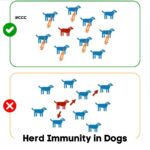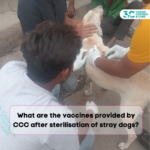Vaccination guide for dog handlers, rescuers, and caregivers.
Vaccinations are crucial for dog handlers, rescuers, and caregivers to protect their health and the health of the dogs they work with. Recommended vaccinations:
1. Rabies Vaccine: Rabies is a fatal viral disease that can affect both animals and humans. It is a viral disease that can be transmitted to humans through the bite of an infected animal (dogs, cats, bats, and raccoons). Vaccination is the only way to prevent this disease. Remember Rabies is a 100% vaccine-preventable disease.
Vaccine: A pre-exposure rabies vaccine is recommended, usually administered in a series of three doses (0 days, 7th day, 21st/28th day).
2. Tetanus Vaccine: Tetanus is a bacterial disease that enters the body through cuts or wounds. Dog handlers are particularly at risk due to potential injuries while handling dogs or equipment. The tetanus vaccine is recommended for everyone.
Dog handlers, rescuers, and caregivers should wear protective clothing like gloves, masks, and goggles, maintain good hygiene by frequently washing hands, and receive training on safe dog handling and disease recognition. Lastly, yearly booster shots of anti-rabies should be taken without fail.
Points to remember in case of dog licks or dog bites:
Category I: If you are touching or feeding or dog licking on intact skin: No post-exposure measures are required.
Category II: If there are minor scratches or abrasion without bleeding by infected dog: Immediate vaccination is required and the wound needs to be treated. Category
III: Single or multiple transdermal bites, scratches, or licks on broken skin. Contamination of mucous membrane with the saliva from licks: Immediate vaccination and human rabies immunoglobulin injection needs to be administered and local treatment of the wound needs to be done.
IMPORTANT: Any dog bite wound needs to be immediately washed thoroughly under running water with soap for 15 minutes. Then the person should rush to a hospital to take the anti-rabies shots.
This comprehensive approach ensures that dog handlers, rescuers, and caregivers are not only protecting themselves but also the populations of dogs they care for, supporting the overall public and dogs’ health.

 Previous Post
Previous Post Next Post
Next Post